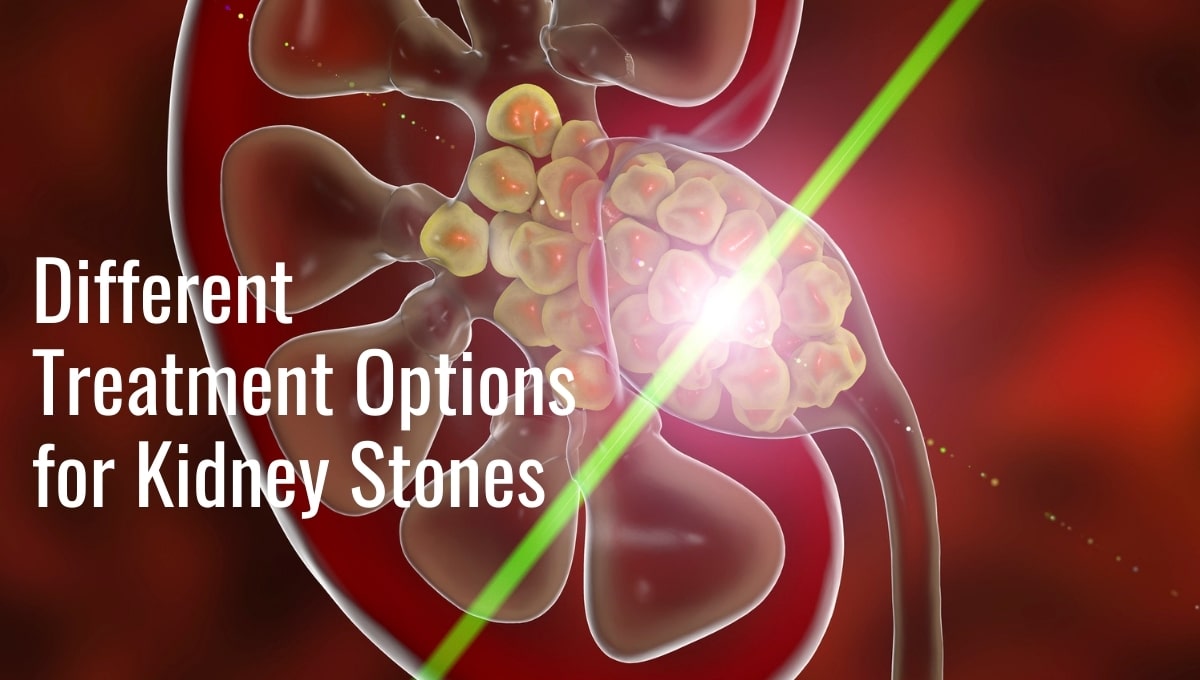KEY TAKEAWAYS:
- Shock wave lithotripsy is a non-invasive and relatively pain-free treatment option for kidney stones, where shock waves are used to break the stones into small sand-like particles that can be passed naturally through urine.
- Ureteroscopy is a more invasive option for kidney stones, involving the use of general anesthesia and a long tool inserted into the urethra to find and remove the stones, with larger stones being broken up using a laser.
- For the largest stones that sit inside the kidney, a minimally invasive procedure may be required, where the urologist enters the kidney through the patient’s back to break the stone up or remove it through the incision, with recovery involving an overnight stay at the hospital.
Kidney stones are hard deposits of salts and minerals that form in the kidneys. They are a common and sometimes acutely painful occurrance that affects both men and women. Sometimes these stones can pass from the kidneys and become lodged in the tubes that connect the kidney to the bladder, called ureters. When this happens, kidney stones can become a big problem, causing painful symptoms that may require medical treatment.

Acute kidney stone symptoms include pain, nausea, vomiting and fever. When a patient experiencing an acute kidney stone episode sees their urologist, the first thing the urologist will do is insert a stint into the urethra. This will open it up and take pressure off the kidney, easing any pain that is present. With the pain subdued, the urologist can move on to assessing the kidney stone’s size and location in order to decide the best treatment option.
One of the best and newest treatment options is shock wave lithotripsy. For this treatment, shock waves are used to break the stone, or stones, into small sand-like particles. These much smaller particles are easier for the patient to pass naturally through their urine. Lithotripsy is a non-invasive and relatively pain free treatment option that is generally well tolerated by the patient.
Ureteroscopy is a slightly more invasive option for kidney stones. General anesthesia is used for this procedure in which a urologist uses a long tool inserted into the urethra to find and remove the kidney stone. In cases of larger stones, a laser is used to break up the stone so it can be scooped out with the tool. With this procedure, the urologist can see the stones as they are removed. Since this is a more invasive option than the shock wave lithotripsy, there is a slightly longer recovery time.
For the largest stones that sit inside the kidney, urologists may need to remove them through the patient’s back. Although still minimally invasive, it is the most invasive option listed here. The urologist will enter the kidney through the back and then either break the stone up or pull the whole thing out through the incision. Recovery for this procedure usually involves an overnight stay at the hospital and some mild pain that can be helped with pain medication.
Patients experiencing the pain and discomfort of kidney stones should be reassured that there are several established procedures for removing the stones. Dr. Samuel Lawindy of the Advance Urology Institute knows the importance of finding the right kidney stone treatment for each patient. For more information about kidney stones, visit the Advanced Urology Institute website.
TRANSCRIPTION:
So my name is Samuel Lawindy, I’m a board certified urologist at Advanced Urology Institute.
If you have an acute stone episode where you come in with a lot of pain, nausea, vomiting, fevers, the first step is to place a ureteral stent.
The stent will decompress the kidney, open it up, relieve the pressure, relieve any kind of infection that may be there, and take away the pain most importantly.
Once that’s in, then we have time to figure out what the next best option is in regards to treatment. So when talking about kidney stones, based on the size of the stone, the location of the stone, you can do anywhere from shockwave lithotripsy, where you break up the stone with sound waves, very minimally invasive, very well tolerated.
Next option is something called ureteroscopy, where we go in through the urethra from below all the way up to the location of the stone, and break it up with a laser.
And then we can pull those pieces out so it’s a little bit more definitive, in that we see the stone and remove it with an actual basket, however it’s a little more invasive so there’s a little bit more recovery time.
Lastly there is the larger stones that can sit inside the kidney that would be required to remove through the back, and that’s usually done in an overnight hospital stay, still relatively minimally invasive, but we go in through the back to the kidney, either break up the stone in small pieces and pull them out, or we can just grab the whole thing out and pull it out there.
For PCNL, recovery is usually an overnight stay at the hospital, there is a tube in the back that stays in place overnight, but then you go home with nothing, you go home with no tube in the back, no catheter from below, pain is relatively mild, but well controlled with pain medication.
REFERENCES:
- “Ureteroscopy: Purpose, Procedure, Risks, and Recovery – WebMD.” 20 May. 2021, https://www.webmd.com/kidney-stones/what-is-ureteroscopy.
- “Kidney Stone Treatment: Shock Wave Lithotripsy.” https://www.kidney.org/atoz/content/kidneystones_shockwave.
- “Large Kidney Stones – Treatments for Kidney Stones – Lithotripsy.” https://urologyaustin.com/general-urology/large-kidney-stones/.


